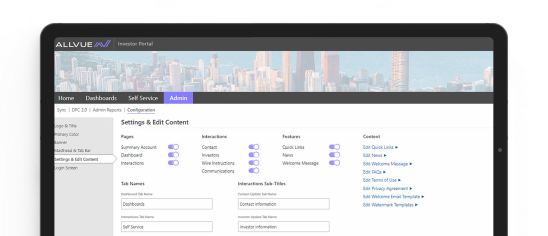
By: Megann Freston
Director of Product Marketing
April 19, 2024
Deal flow is a foundational concept in finance, but it’s also one that many newer investors have an oversimplified understanding of. That surface-level simplicity belies just how important an intentional and rigorous approach to deal flow optimization can be for any investor or firm.
Below, we’ll explain what deal flow is and why it matters. Then, we’ll walk through some of the most important parts of the deal flow process and address some challenges and considerations facing investors in 2024—along with how to overcome them and optimize deal flow proactively.
What is deal flow, and why does it matter?
Deal flow, in the most basic terms, is a measure of how many opportunities are presented to investors by prospective strategic partners. The term is most commonly associated with pitches made by startups and other companies to venture capital (VC) funds, angel investors, private equity (PE) firms, and other investment managers. In general, they want to maximize deal flow.
Deal flow matters because it indicates how much cashflow is available in the immediate future and further down the line. Smart investors are constantly looking for ways to optimize deal flow.
However, it’s important to note that deal flow is a measure of how much rather than how many.
What that means is that deal flow is not strictly a quantitative measure. It’s not just about the number of opportunities that become available. Instead, it needs to incorporate qualitative considerations. Positive deal flow might mean fewer overall opportunities if there’s a better percentage of high-yield and otherwise favorable opportunities qualified by investors.
In other words, strong deal flow is ideally about having more and better opportunities.
The importance of deal flow for investors
Simply put, having more good deals on the table means investors can make more and better returns. But beyond that basic fact, optimal deal flow—quantitative and qualitative—is critical because it helps investors project future earnings and make adjustments to maximize them.
The work that goes into qualifying deals also helps analytical decision-making. Investors can better isolate the factors that work best for them and seek them out in future transactions—or make adjustments to solve for potential weaknesses that make certain deals less appealing.
Another important consideration is the material and operational impacts deal flow can have.
One phenomenon illustrated by McKinsey is that high deal flow levels lead to shake-ups amid the executive leadership of companies acquired or invested in. Particularly with PE, as firms seek to take an active role in improving portfolio companies’ performance, high deal flow leads to influxes of new leaders in the C-Suite. Without a careful approach, this knock-on effect of positive deal flow can lead to operational difficulties in adjusting to new management.
The standard deal flow process
It’s tempting to think of deal flow like a sales funnel, and there are certainly similarities between the two. Both processes start with the intake and qualification of prospects (leads or deals), then progress through qualification and eventual closing of the deal. However, there are also critical differences between the two pipelines. The biggest among them are in prospect generation.
Whereas sales across most industries starts with robust cold outreach campaigns, these are close to non-existent in many VC and PE deal flow pipelines. According to Harvard Business Review (HBR), as little as 10% of VC deal flow decisions start from cold email outreach.
Instead, investment deal flow is much more relationship-based. Investors and firms rely on reputational advantages and referrals to generate, qualify, and close deals with potenital investment targets.
For our purposes, the deal flow process breaks down into three distinct phases—
Early phase: Sourcing and screening
As noted above, deal flow in VC, PE, and other investment circles typically does not begin with cold outreach. Instead, investors use their networks and referrals to generate opportunities.
There are many approaches to deal flow origination. Some common options include:
- Contacting current and past strategic partners to discuss possible ventures
- Attending networking events to meet founders and leaders seeking funds
- Engaging in online communities and forums to create fruitful relationships
Once potential deals have been generated, it’s equally important to qualify them.
Screening is a shortlisting process that narrows down the potential list of deals to a subset of ventures that are most likely to produce optimal results. As an additional measure, firms may also rank these prospects numerically and pursue only a certain percentage thereof.
Middle phase: Review and due diligence
This next part continues and expands the evaluation work done in screening. If the prior phase ends on a shortlist, this next one begins with a rigorous analysis applied to every entity on it.
It’s important to note that review varies widely and often eschews traditional metrics.
HBR’s investigation into VC decision-making unveiled some surprising trends in the factors investors seek out in their review and winnowing processes. For example, 95% of investors interviewed prioritized startup founders themselves as pivotal factors in deal pursuits. This dwarfs the relative importance of, for instance, the industry that a company is in (31%). Other seemingly critical factors like business model (74%) and market (68%) also paled in comparison.
However factors are valued, investors also need to conduct due diligence as a final step before closing to ensure that target companies’ outlooks are what they appear to be. Compliance and environmental, social, and governmental (ESG) considerations may also apply at this stage.
Final phase: Capital deployment
When it comes time to finalize a deal, here’s where investors negotiate with their qualified prospects, and the fruits of their labors in the previous phases become most obvious. Since investors have carefully considered the companies’ valuations, finances and risk factors, they enter the negotiation from a position of privilege.
Not every deal is going to unfold exactly as projected, no matter how careful the calculations were. Any changes that become apparent need to inform not only the decision-making for the deal in question but also for all others on the shortlist—and off of it. If details emerge that indicate a deal may be more profitable than initially anticipated, or if a potential deal looks worse up close than it did from afar, that might change the math on other prospects.
Deal flow challenges and considerations
It’s impossible to overstate the importance of a qualitative approach to deal flow optimization rather than a purely quantitative one. Having more opportunities is not necessarily better, but having better ones always is. With that said, reductions in the amount of overall deals in the wider economy is a challenge for all investors looking to improve and expand their deal flow.
And, as it happens, investors have faced an uphill battle in deal flow for about two years.
After “gravity-defying” deal flows in 2021, many experts speculated that the pipelines would slow down. And that’s exactly what happened, as 2022 saw deal flow grind to a near-halt. In its 2023 Private Markets Review, McKinsey notes how rising inflation eventually took a toll around mid-2022. As dry powder inventories spiked, deal flows went low and have stayed there since.
What a climate like this means for managers is that there are fewer prospects to qualify, which in turn leads to fewer quality options. Less overall deal flow means fewer promising prospects.
Deal flow optimization and best practices
Fortunately, the climate of economy-wide deal flow stagnation appears to be lifting, as experts project an uptick in PE exits in 2024 and beyond. Overdue deals that should have happened in 2023 (if not sooner) are going to happen, and the industry figures to get back on track.
This isn’t a reason for VCs and PEs to neglect deal flow optimization, however; on the contrary, better-prepared firms will be in the best position to take advantage of the coming upswing.
To that effect, investors should be pursuing deal flow best practices, like:
Forward-thinking investors should be looking for ways to automate parts of the deal flow process so they can devote their attention to evaluating and closing the best ones available.
Leveraging big data for deal flow navigation
Allvue is committed to helping private capital managers get the most out of their deal flows by maximizing high-quality opportunities and supporting decision-making with easily accessible impactful data.
Our deal tracking software solutions help you understand the complexities of deals inside and out.. Our platform integrates seamlessly with the tech stacks your firm is already using, making powerful data analytics insights available to decision-makers and other stakeholders near-instantaneously.
To learn more about how Allvue will optimize your deal flow, get in touch today!
Sources:
HBR. How Venture Capitalists Make Decisions. https://hbr.org/2021/03/how-venture-capitalists-make-decisions
Investopedia. Deal Flow: The Venture Capital Term for Business Sentiment. https://www.investopedia.com/terms/d/dealflow.asp
McKinsey & Co. A playbook for newly minted private equity portfolio-company CEOs. https://www.mckinsey.com/industries/private-equity-and-principal-investors/our-insights/a-playbook-for-newly-minted-private-equity-portfolio-company-ceos
McKinsey & Co. Global M&A market defies gravity in 2021 second half. https://www.mckinsey.com/capabilities/m-and-a/our-insights/global-m-and-a-market-defies-gravity-in-2021-second-half
McKinsey & Co. Private markets turn down the volume. https://www.mckinsey.com/~/media/mckinsey/industries/private%20equity%20and%20principal%20investors/our%20insights/mckinseys%20private%20markets%20annual%20review/2023/mckinsey-global-private-markets-review-2023.pdf
strategy&. Why PE firms are expected to make more exits in 2024 and beyond. https://www.strategyand.pwc.com/de/en/functions/deals-strategy/uptake-in-private-equity-exits-for-2024.html
Venture Capital Journal. Dealflow will stay slow, with more due diligence and debt deals in the offing. https://www.venturecapitaljournal.com/dealflow-will-stay-slow-with-more-due-diligence-and-debt-deals-in-the-offing/
More About The Author

Megann Freston
Director of Product Marketing


